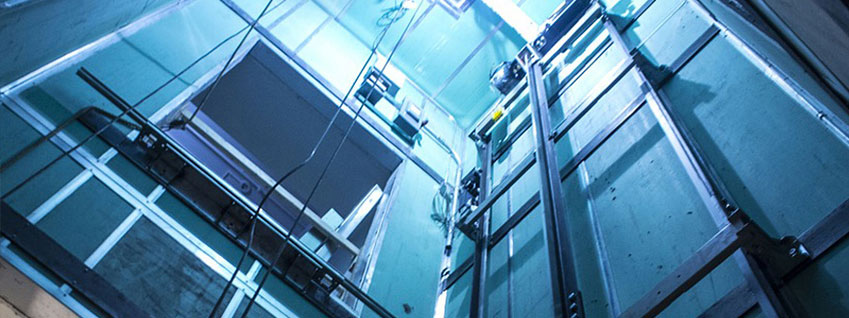London Lift Company: Trusted Experts for All Your Upright Transportation Needs
London Lift Company: Trusted Experts for All Your Upright Transportation Needs
Blog Article
Looking Into the Globe of Elevators: Common Issues Dealt With by Numerous Lift Systems
As we navigate via the upright transport systems of contemporary structures, lifts stand out as an important element of our everyday lives. Nevertheless, behind their seamless operation exists a world of intricate devices that can often run into challenges. From hydraulic lifts to traction systems and machine-room-less styles, each lift kind includes its set of typical concerns. Recognizing these difficulties is important for making certain the smooth functioning of these important systems. Let's explore the complexities that underlie the procedure of lifts and the potential problems that can develop, clarifying the intricate internet of lift devices.
Hydraulic Lifts
Hydraulic lifts, usually liked for low-rise structures, use fluid stress to regulate the activity of the elevator cars and truck (lift repair companies). This mechanism includes a hydraulic pump pressing oil right into a cylinder, causing the lift to relocate the preferred direction. While hydraulic elevators are recognized for their peaceful and smooth procedure, they do come with their own collection of usual issues
One prevalent trouble with hydraulic lifts is oil leakage. Furthermore, issues with the control system, such as faulty shutoffs or a malfunctioning pump, can cause disturbances in the lift's movement.
Normal maintenance and prompt repairs are necessary to ensure the smooth performance of hydraulic elevators. By attending to these usual concerns proactively, structure proprietors can minimize downtime and make certain the security and performance of their vertical transport system.
Grip Elevators
When thinking about upright transport systems in structures, another common type besides hydraulic lifts is the traction elevator. Grip lifts operate utilizing a system of ropes and weights that move the lift cars and truck by clutching onto the hoist ropes. This system allows for smoother and much faster vertical transport compared to hydraulic systems.
One of the typical problems dealt with by traction elevators is rope wear. The constant motion of the ropes within the traction system can result in put on and tear in time, potentially causing the elevator to breakdown or end up being unsafe for usage. Normal inspections and upkeep of the ropes are important to make certain the elevator's correct functioning and security.
Another issue that traction lifts might encounter is connected to the control system. Problems with the control system can bring about concerns such as unpredictable movement, delays in feedback times, or perhaps complete closures. Normal testing and upkeep of the control system are essential to avoid such problems and make certain the elevator's integrity.
Machine-Room-Less (MRL) Elevators

Among the essential components of MRL elevators is the small gearless grip maker Read Full Article that is mounted within the hoistway. This machine effectively drives the lift vehicle without the demand for cumbersome tools found in typical grip lifts. Additionally, MRL lifts commonly use a weight system to balance the automobile, additional boosting their power effectiveness.
Despite their advantages, MRL elevators may face difficulties associated with repair and maintenance due to the restricted area for devices setup. Availability for servicing components within the shaft can be limited, needing specialized training for professionals. Correct maintenance schedules and normal inspections are crucial to ensure the continued smooth procedure of MRL lifts.
Overloading and Weight Limit Issues
Overloading and weight limitation concerns are crucial problems in lift operations. Elevator suppliers design raises with certain weight capacities to guarantee passenger security and equipment longevity.
When elevators are overwhelmed, it places too much stress on the motor, cables, and various other elements, potentially creating breakdowns or failures. Safety and security systems such as sensing units and overload sensing units are in area to avoid lifts from moving if they find excess weight. Furthermore, exceeding weight limitations can cause boosted power consumption and deterioration on the elevator system.
To mitigate straining issues, constructing managers need to prominently present weight limits in lifts and educate passengers on the value of adhering to these limitations - lift repair companies. Normal upkeep checks by certified professionals can likewise help ensure that lifts are operating within secure weight parameters. By addressing overloading and weight limit issues proactively, building owners can enhance elevator safety and security and performance
Electrical System Failings
Exceeding weight limits in elevators can not just lead to mechanical issues however likewise possibly add to electric system failures within the lift infrastructure. Electrical system failings are a critical worry in lift operation, as they can cause unexpected closures, malfunctions, or also safety and security risks.
Additionally, power rises or fluctuations in the electrical supply can also interrupt the elevator's procedure, influencing its efficiency and safety and security. These electrical disruptions can harm delicate lift elements such as control board, circuit card, or sensors, leading to system failings. Regular upkeep and assessments are crucial you can try here to determine and address prospective electric concerns quickly, making sure the effective and risk-free operation of lift systems. By adhering to weight limits and performing regular electrical system checks, building owners can minimize the risk of electric failings in elevators.
Final Thought

Hydraulic elevators, usually chosen for low-rise buildings, make use of fluid stress to regulate the motion of the elevator cars and truck.When considering upright transport systems in structures, an additional common type apart from hydraulic elevators is the traction elevator. Traction elevators operate making use of a system of ropes and counterweights that relocate the elevator automobile by gripping onto the hoist ropes. Unlike conventional lifts that call for a different maker area to house the devices, MRL elevators incorporate most of the components within the shaft, removing the demand for a specialized equipment area.In verdict, elevators face typical concerns such as hydraulic breakdowns, grip system failings, and electric system troubles.
Report this page